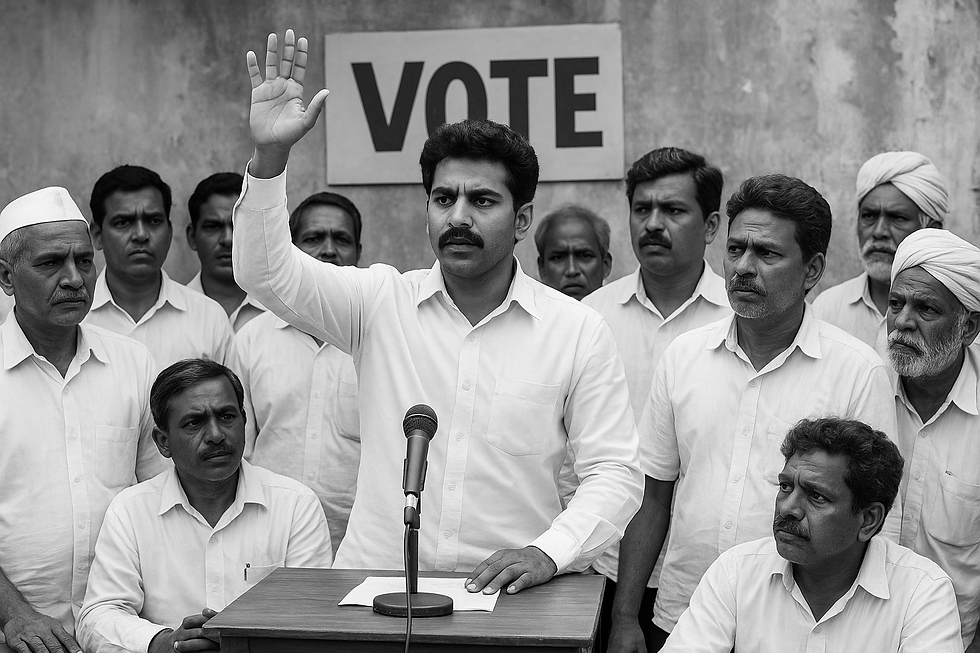Forgery Must Be Proven Beyond Doubt – Supreme Court Upholds Conviction in Corruption Case
- Chintan Shah

- Feb 24
- 3 min read
Summary of the Judgment
Case Name: Surinder Dogra v. State Through Director CBI
Date of Judgment: 21st February 2025
Bench: Hon'ble Justice Sudhanshu Dhulia, Hon'ble Justice Prashant Kumar Mishra
Advocates: Not explicitly mentioned in the judgment
Acts and Sections:
Sections 420 (Cheating), 468 (Forgery for Purpose of Cheating), 471 (Using as Genuine a Forged Document) of the Ranbir Penal Code, 1989
Section 5(1)(d) read with Section 5(2) of the Prevention of Corruption Act, 1988
Cited Judgments:
Sait Tarajee Khimchand v. Yelamarti Satyam, AIR 1971 SC 1865
Ram Narain v. State of Uttar Pradesh, AIR 1973 SC 2200
Kale & Ors. v. Deputy Director of Consolidation & Ors., AIR 1976 SC 807
Sharad Birdhichand Sarda v. State of Maharashtra, AIR 1984 SC 1622
State of Rajasthan v. Islam, AIR 2011 SCW 1748
V.C. Shukla v. State Through CBI, AIR 1980 SC 962
Background of the Case
The appellant, Surinder Dogra, a Traffic Superintendent at Indian Airlines, Jammu, was convicted for fraudulently tampering with flight tickets. The case arose when an internal audit revealed a manipulated ticket, issued on 19th November 1997, where an infant ticket in a fictitious name was altered to an adult ticket, causing financial loss to Indian Airlines. The Central Bureau of Investigation (CBI) took up the case following a complaint from the airline’s vigilance manager.
Key Issues Before the Court
Whether the evidence presented was sufficient to convict the appellant under Sections 420, 468, and 471 of the Ranbir Penal Code, 1989, and the Prevention of Corruption Act, 1988.
Whether the alteration of the ticket and the financial loss caused to Indian Airlines constituted a punishable offence under the charged sections.
Whether the appellant's actions were conclusively proved through documentary evidence and witness testimony.
Court’s Reasoning and Findings
Forgery and Cheating: Establishing Criminal Intent
The Hon'ble Supreme Court upheld the findings of the Trial Court and the High Court that the appellant fraudulently altered a flight ticket.
"The relevant coupons were prepared by the appellant on 19.11.1997 as he was manning the ticket sale counter at Jammu Airport and his duty was to prepare and sell the Indian Airlines tickets to passengers."
The Court noted that an airline ticket typically consists of three or four leaves, including an auditor coupon and a flight coupon. Since the appellant was responsible for issuing the tickets, the forgery could not have been committed by any other individual.
Corroboration Through Handwriting Analysis
The Court heavily relied on the testimony of handwriting expert PW-8 (H.M. Saxena) and PW-5 (J.P. Jaiswar), who was familiar with the appellant’s handwriting. Their examination confirmed that the alterations were made by the appellant.
"In view of the report of the handwriting expert (PW-8) and the testimony of PW-5, it is proved beyond doubt that the appellant manipulated the flight coupon and auditor coupon."
This forensic evidence, combined with procedural audits, solidified the prosecution's case.
No Substantial Defence Presented
The appellant did not present any witnesses in his defence and merely denied the allegations during his examination under Section 313 Cr.P.C. The Court found this to be a weak defence given the weight of documentary and expert evidence.
Precedents and Their Applicability
The appellant cited multiple cases, including Sharad Birdhichand Sarda v. State of Maharashtra (AIR 1984 SC 1622) and V.C. Shukla v. State Through CBI (AIR 1980 SC 962), to argue the absence of direct evidence linking him to the forgery. However, the Supreme Court rejected these arguments, stating:
"While circumstantial evidence must be conclusive, the direct evidence in this case, including the handwriting expert’s testimony and the procedural chain of ticket issuance, leaves no room for doubt."
Thus, the Court reaffirmed that circumstantial gaps must not exist in cases of forgery and corruption, but here, the evidence was direct and incontrovertible.
Final Decision and Its Implications
The Supreme Court upheld the conviction and dismissed the appeal, imposing simple imprisonment of six months for each offence and a fine of ₹5,000 per charge.
This judgment has significant implications:
For Public Sector Employees: It reinforces strict accountability in financial transactions, particularly for individuals handling monetary transactions in government enterprises.
For Criminal Jurisprudence: It establishes that procedural lapses and forensic evidence are crucial in proving white-collar crimes.
For Future Corruption Cases: It sets a precedent that mere denial of allegations is insufficient; the accused must actively refute the prosecution’s evidence.
Conclusion
The judgment reaffirms the Court’s firm stance on corruption and financial fraud within public sector enterprises. By relying on forensic analysis, documentary evidence, and procedural integrity, the ruling ensures that similar cases in the future adhere to strict evidentiary standards. As the Court noted:
"We have not found any such illegality or irregularity in the finding of guilt recorded by the Trial Court and the High Court."
This case serves as a crucial precedent in fraud detection, criminal procedure, and the legal responsibilities of public officials.



Comments